Dracaena [dra-SEE-nah] is a popular, easy-to-grow house and landscape plant boasting approximately a hundred and twenty different species of shrubs and trees.
Dracaenas are popular for their upright foliage and ease of growing nature, which is why these Dracaena Varieties can become excellent houseplants!

These Dracaena plant types originate in a number of different tropical and subtropical settings, including:
- Central America
- Canary Islands
- Southern Asia
- South Africa
- Cape Verde
- Australia
- Madeira
The name, Dracaena, is derived from a Romanized version of the ancient Greek word, drakaina, which means female dragon.

In this article, we review some of the many ways to use Dracaena in your landscape, living room, and home and provide a brief overview of eight of the most popular varieties.
The Many Wonderful Features of Dracaena
These attractive, hardy plants, shrubs, and trees are easy to care for.
Young plants are leafy and verdant and make excellent additions as indoor plants to any home or office on a tabletop, desktop, or windowsill.
As they grow older, Dracaena becomes more treelike and develops woody stems.

Mature, healthy plants of some Dracaena varieties (corn) can grow 6′ feet high and make wonderful specimen plants in your home, sunroom, patio, or garden.
A collection consisting entirely of Dracaena can offer a surprising amount of variety and interest throughout your home and garden.
Leaves and foliage vary in shape from smallish and oval to long, sword-like, or strappy.
Colors range from solid pale green to green with yellow stripes and variegated.
Some have interesting reddish stems and veins. Plus, most are available at local garden centers.
NOTE: If you can grow Dracaena, you’ll enjoy its cousin, the Cordyline plant.
How Do You Grow Dracaena?
All sorts of Dracaena make wonderful houseplants when they’re small because they thrive in normal household conditions.
They prefer bright, indirect sunlight; however, many types of Dracaena can tolerate low light settings.
It needs very bright yet indirect light to keep its unique colors.
One of the reasons dracaena is so popular as a houseplant—and what all varieties have in common—is that they are low-maintenance and easy to care for.

An important consideration in many indoor settings is that they do well in low-light conditions.
These plants have moderate water demands and usually do well with thorough, weekly watering.
Check to be sure the soil is almost completely dry before watering.
Fertilize a couple of times a year with a standard, all-purpose liquid houseplant fertilizer.
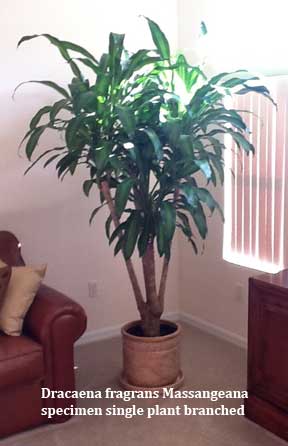
The Dracaena plant has very few problems, but if you experience trouble with brown leaf tips, it may indicate your plant needs more water and a bit more humidity.
What Are Some of the Most Popular Types of Dracaena Plants?
Dracaena Marginata
Dracaena marginata is also known as Dragon Tree or Madagascar Dragon Tree.
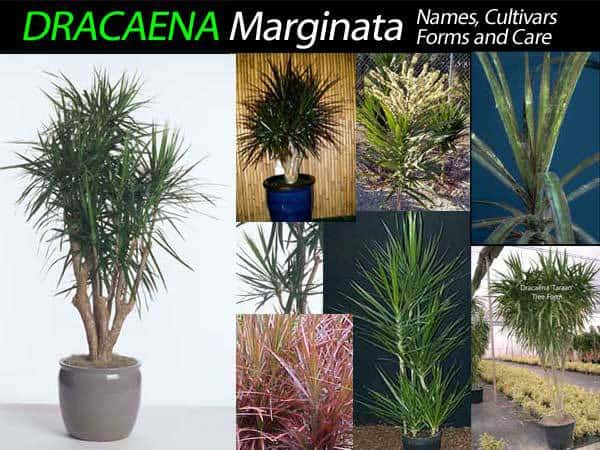
This slow-growing species does very well with very little care.
It may take as long as three years to attain a height of about 4′ feet.
There are several different leaf variations within this species.
- Dracaena Magenta
- Dracaena Tricolor
- Dracaena Marginata Colorama
Dracaena Draco
Dracaena Draco is also sometimes commonly called the Dragon Tree.
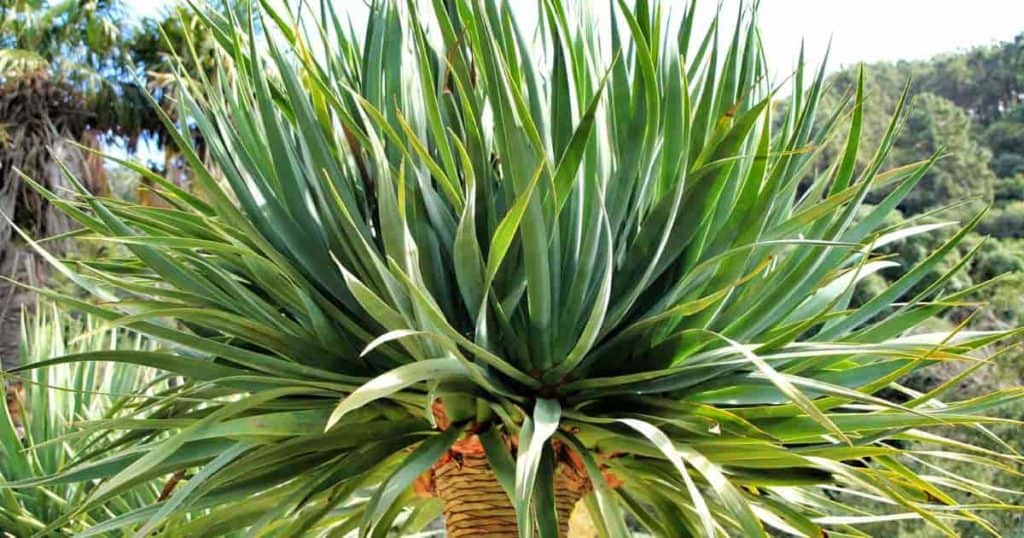
It is a succulent tree usually kept as a houseplant, but if you live in a tropical or subtropical area, plant it outdoors, and it will grow to be an impressively wide, thick, branched tree up to 25′ feet tall.
One ancient specimen was measured at 70′ feet tall.
When allowed to grow in this manner, Draco’s sword-like, bluish-green leaves will grow to be about 2′ feet long.
In the summertime, the tree produces small, greenish-white flowers, which transition into orange berries.
Dracaena Arborea
Dracaena arborea is another Dracaena, sometimes called Dragon Tree or Tree Dracaena.
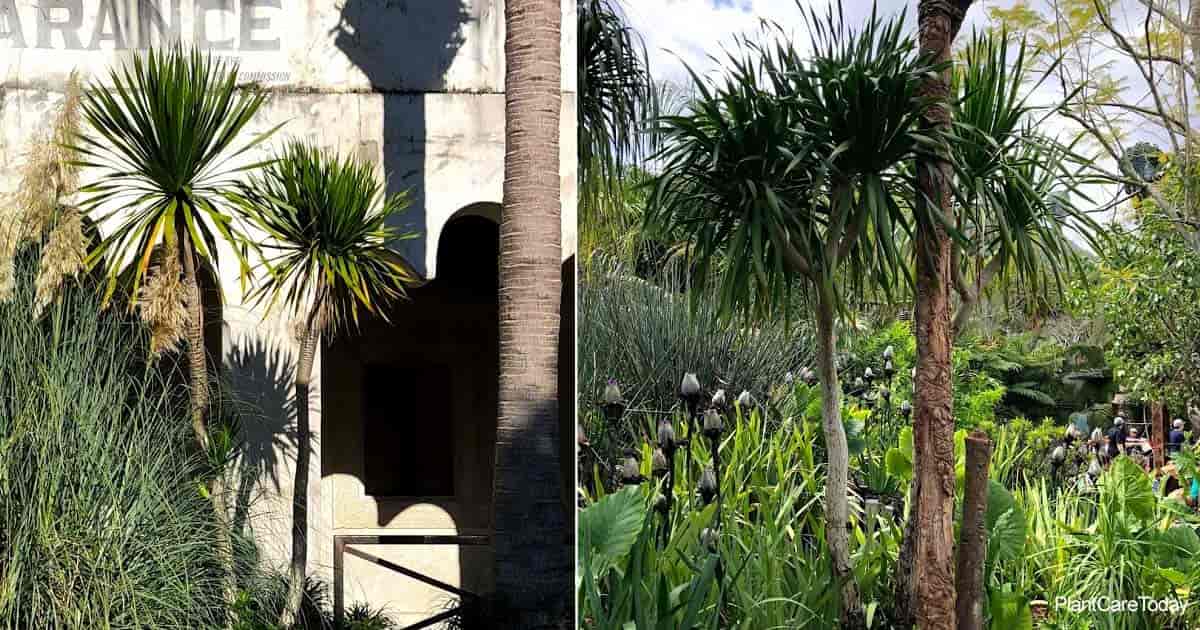
As the name suggests, this variety is a genuine tree that is best suited to the outdoors.
In the wild, it grows in a semi-desert setting.
If you live in a hot, dry area and need a tall, palm-like tree for your yard or garden, tree Dracaena with its thick trunk with single or multiple heads and broad, stiff leaves, may be just the plant for you.
Tree Dracaena can do well in settings ranging from partial shade to bright direct sunlight.
This vibrantly colored, relatively short dracaena variety has broad leaves with distinct emerald and lime-green stripes.
Although they are quite drought tolerant, you’ll get better results with regular watering and good quality, well-draining soil.
Dracaena Fragrans | Dracaena Massangeana
Dracaena fragrans and Dracaena massangeana is also known as Corn Plant or Mass cane because their leaves look somewhat like corn leaves.
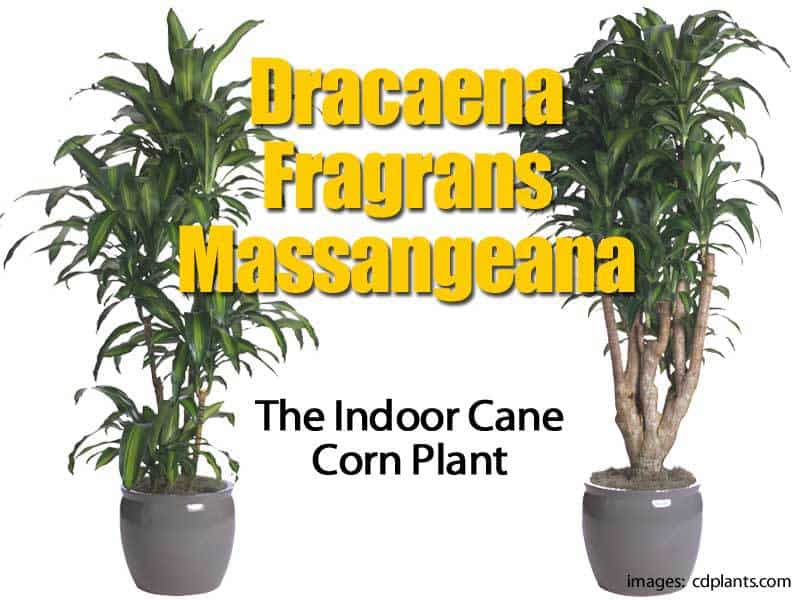
This slow-growing, easy-care species does well in low-light conditions and doesn’t need much water.
It’s a good choice in a large, open space such as a sunroom, office reception area, mall, or wide hallway.
This tropical plant will grow outdoors in USDA hardiness zones 10 and 11.
Dracaena Reflexa
Dracaena reflexa has dark green leaves and was formerly known as pleomele.
There are other reflexa varieties:
- Song of Jamaica
- Song of India plant (below)
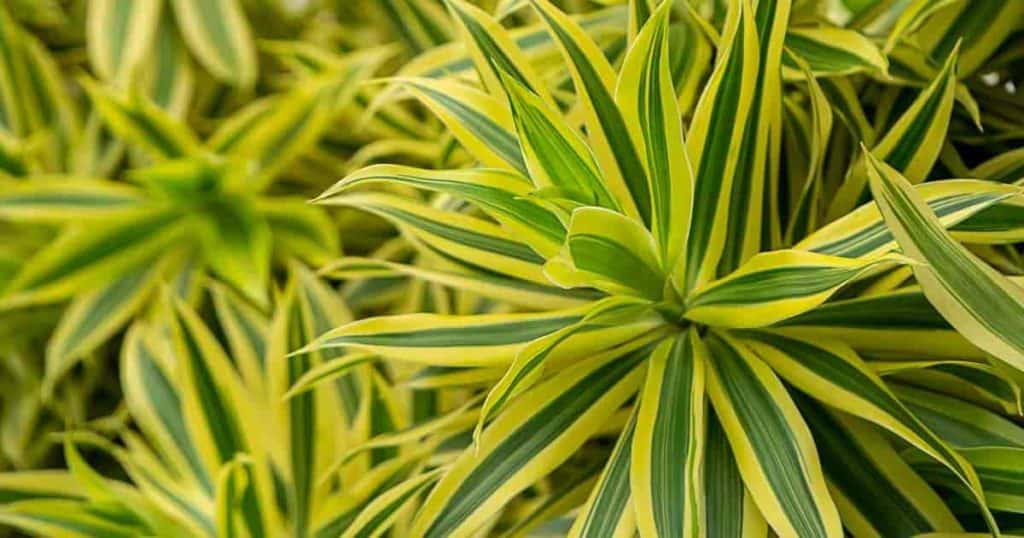
This pretty plant is similar to marginata, but its leaves are a bit wider. With its stiff, sword-like leaves, this slow grower is tough and easy to care for, even for inexperienced plant parents.
The green leaves have attractive cream-colored margins.
Like marginata, the plant may take quite a while to attain a maximum height of about 3′ feet.
It may occasionally produce small, insignificant flowers.
Dracaena Deremensis Janet Craig
Dracaena deremensis is also known as Janet Craig, and a compact variety known as Janet Craig compact.
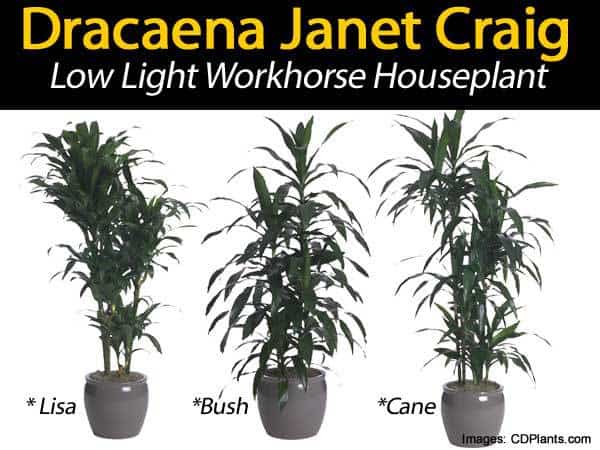
This very common houseplant has attractive, shiny, dark green leaves which grow in compact tufts.
It is an extremely easy plant to grow.
Several Dracaena types, varieties, or sports of Janet Craig include:
- Dracaena deremensis Lisa
- Dracaena deremensis Michiko
- Dracaena deremensis ‘Hawaiian Sunshine’
The plant is, in fact, a small tree and is an excellent choice for small apartments, bathrooms, office cubicles, and other areas where a single, extremely attractive, very easy-care plant is desirable.
Dracaena Warneckii
Dracaena warneckii is sometimes called Dracaena Warnock or Striped Dracaena.

This variety of Dracaena deremensis is quite similar to Janet Craig because it, too, is a small tree or shrub.
This is of the most popular houseplants for a good reason. The leaves differ, though.
They are pointy, narrow, and sport distinctive, lengthwise white stripes in the center.
Dracaena Lemon Lime is a very interesting variety of Dracaena deremensis.
Its lance-shaped leaves are an interesting shade of chartreuse with white stripes and grayish-green centers.
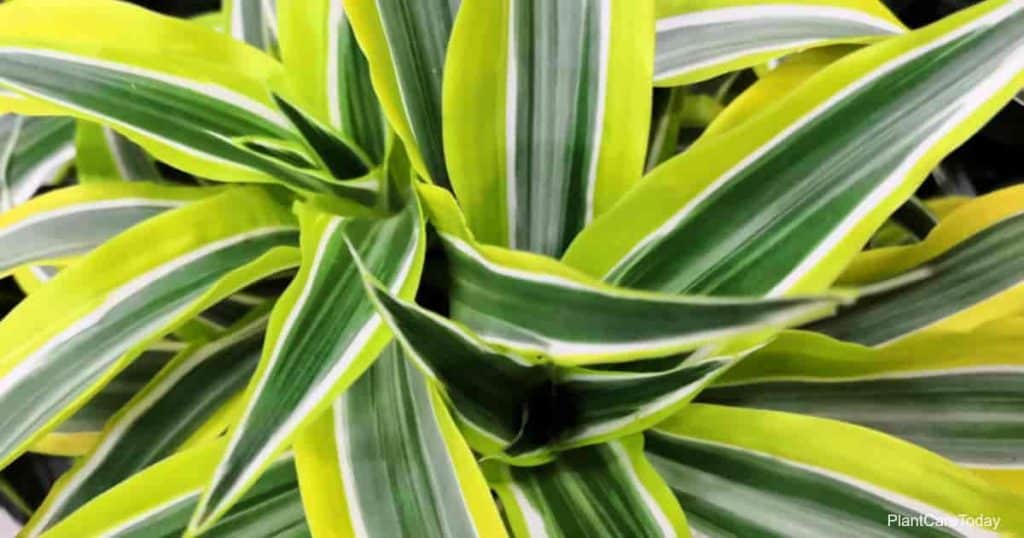
Dracaena sanderiana (Lucky Bamboo)
Dracaena sanderiana | Dracaena braunii is also known as the Lucky Bamboo plant.
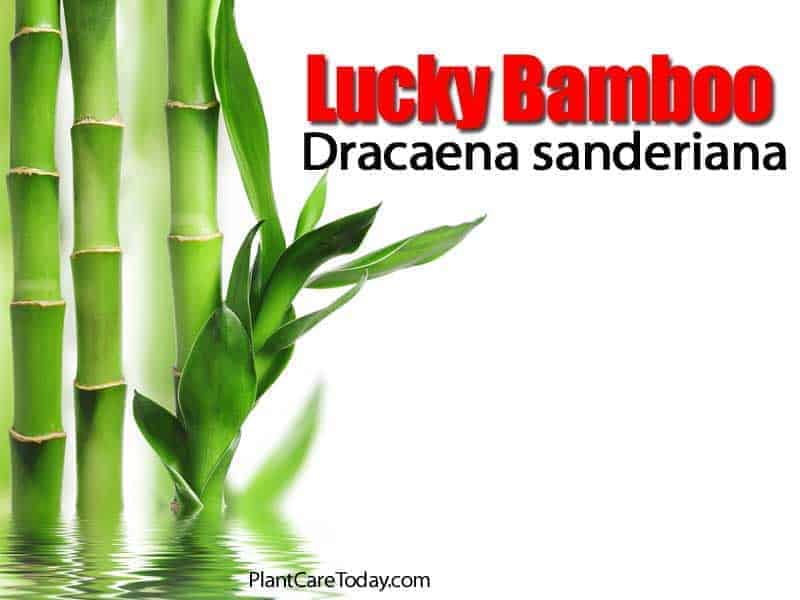
This popular plant is not immediately recognizable as a Dracaena, and as the name suggests, it looks quite a bit like bamboo.
You’ll often see these plants for sale simply sitting in water.
Or plant them in soil, and they will live longer and do better if kept in this manner.
Lucky Bamboo may occasionally produce small, unremarkable flowers.
Related: Why Are My Lucky Bamboo Leaves Turning Yellow?
Dracaena Trifasciata
Dracaena trifasciata is a stemless type of dracaena plant with long, thick, variegated sword-shaped leaves.
It is also known as Sansevieria trifasciata Snake Plant, also called Mother-in-law’s Tongue or Saint George’s Sword. It is a slow-growing, low-maintenance, and extremely hardy houseplant that is also a good air cleaner.
They will arch and have a horizontal direction and are light green. This is one of the rare indoor types that will blossom willingly.
It grows well in bright indirect sunlight – Though too much exposure to sunlight may destroy it.